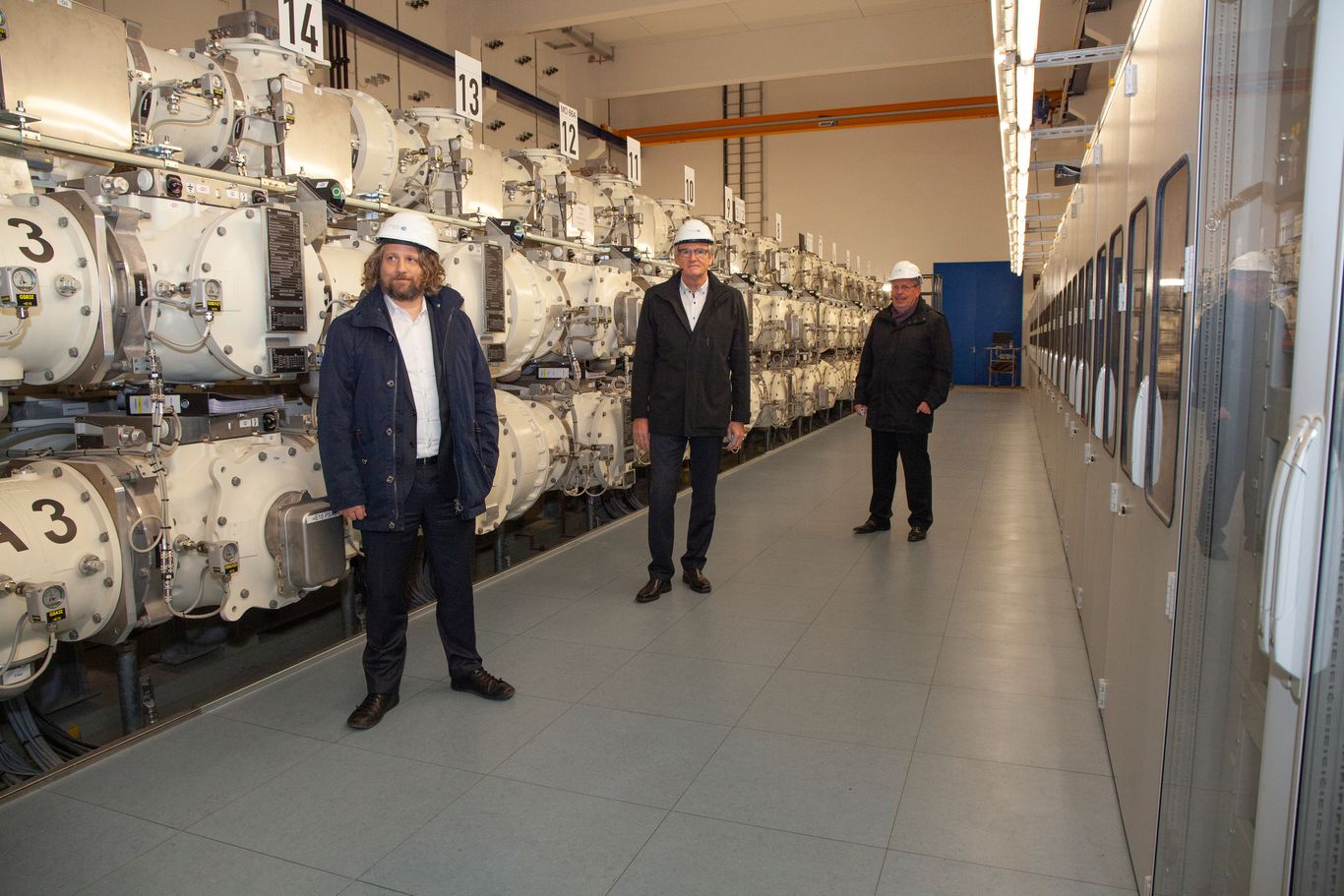The new Charlottenburg grid node is now distributing power
30.10.2020
Berlin's newest grid node in the Berlin electricity network is now up and running. On Thursday evening, the Charlottenburg grid node – a gas-insulated 110 kV switchgear facility – was formally commissioned by Christian Rickerts, State Secretary in the Berlin Senate Department for Economics, Energy and Public Enterprises, Thomas Schäfer, Chairman of the Board of Directors of Stromnetz Berlin, and Dr Frank Büchner of Siemens Energy.
Stromnetz Berlin invests in state-of-the-art network infrastructure
Berlin's newest grid node in the Berlin electricity network is now up and running. On Thursday evening, the Charlottenburg grid node – a gas-insulated 110 kV switchgear facility – was formally commissioned by Christian Rickerts, State Secretary in the Berlin Senate Department for Economics, Energy and Public Enterprises, Thomas Schäfer, Chairman of the Board of Directors of Stromnetz Berlin, and Dr Frank Büchner of Siemens Energy.
The Charlottenburg grid node is Stromnetz Berlin's largest single investment in recent years. Its commissioning brings the number of grid node points in the city to 17. Over €30 million has been invested in the new construction on Quedlinburger Straße, and the result is Europe's largest facility of this kind, with 31 switchgear bays distributed over two floors. A further €30 million is being invested in new cables and electricity connections in the adjacent grid area of the new switchgear facility. Ten transformer stations in the district of Charlottenburg-Wilmersdorf are supplied with electricity from here, meaning that 320,000 household and commercial customers in the districts of Charlottenburg, Moabit, Wedding, Wilmersdorf and Reinickendorf will benefit from the latest technology. Certain important special customers will also be directly supplied with electricity through the grid node.
"Today is a good day for Berlin and its infrastructure. Berlin is growing in more than one direction and we are responding to this growth with a comprehensive investment programme designed to meet the requirements of a modern and sustainable electricity grid and to ensure the quality of supply. The new Charlottenburg grid node is real proof that this strategy is working, and underlines our claim to be operating a modern network infrastructure", explains Thomas Schäfer at the commissioning.
Christian Rickerts, State Secretary at the Berlin Senate Department for Economics, Energy and Public Enterprises, points out that "a stable, secure grid is fundamental for Berlin. With the transition to new energy sources and forms of transport, and the growth of our city, the demand for electricity and the demands placed on the energy grid are rising. I am therefore delighted about this new grid node for City West."
Advanced technology in a new package
Stromnetz Berlin has invested over a billion euros in the Berlin electricity grid over the last five years. And this investment activity is continuing at a high level. This year again, around €200 million will be spent on upgrading and extending, maintaining and refurbishing, and digitalising the network. This can be seen in the large grid systems, amongst other things. Following the Marzahn grid node in spring 2020, the Charlottenburg grid node is the second large plant to be opened this year. The technology installed in the Charlottenburg grid node comes "from Berlin, for Berlin", as it was produced at the nearby Siemens plant in Spandau.
The site where the new grid node was built is a conventional industrial site in the immediate vicinity of the Charlottenburg combined heat and power plant. Generation and transport of energy has been a dominant feature of the area for decades, and in 2016, Stromnetz Berlin began construction of the new grid node. It replaces the old facility on the neighbouring site, which no longer met modern technical standards. With a capacity of 510 megavolt-amperes (MVA), the new plant is able to accommodate electrical energy from both the transmission system operator 50Hertz Transmission (from the European electricity grid) and the Charlottenburg CHP plant, while at the same time meeting the increased energy requirements of the district and its surroundings. The Charlottenburg grid node is connected to other grid nodes in the urban area. This connection is important to be able ensure a stable power supply at all times.
The old neighbouring switchgear facility will be dismantled by 2023, but its listed building shell is to be preserved.

Christian Rickerts, Dr. Frank Büchner and Thomas Schäfer
